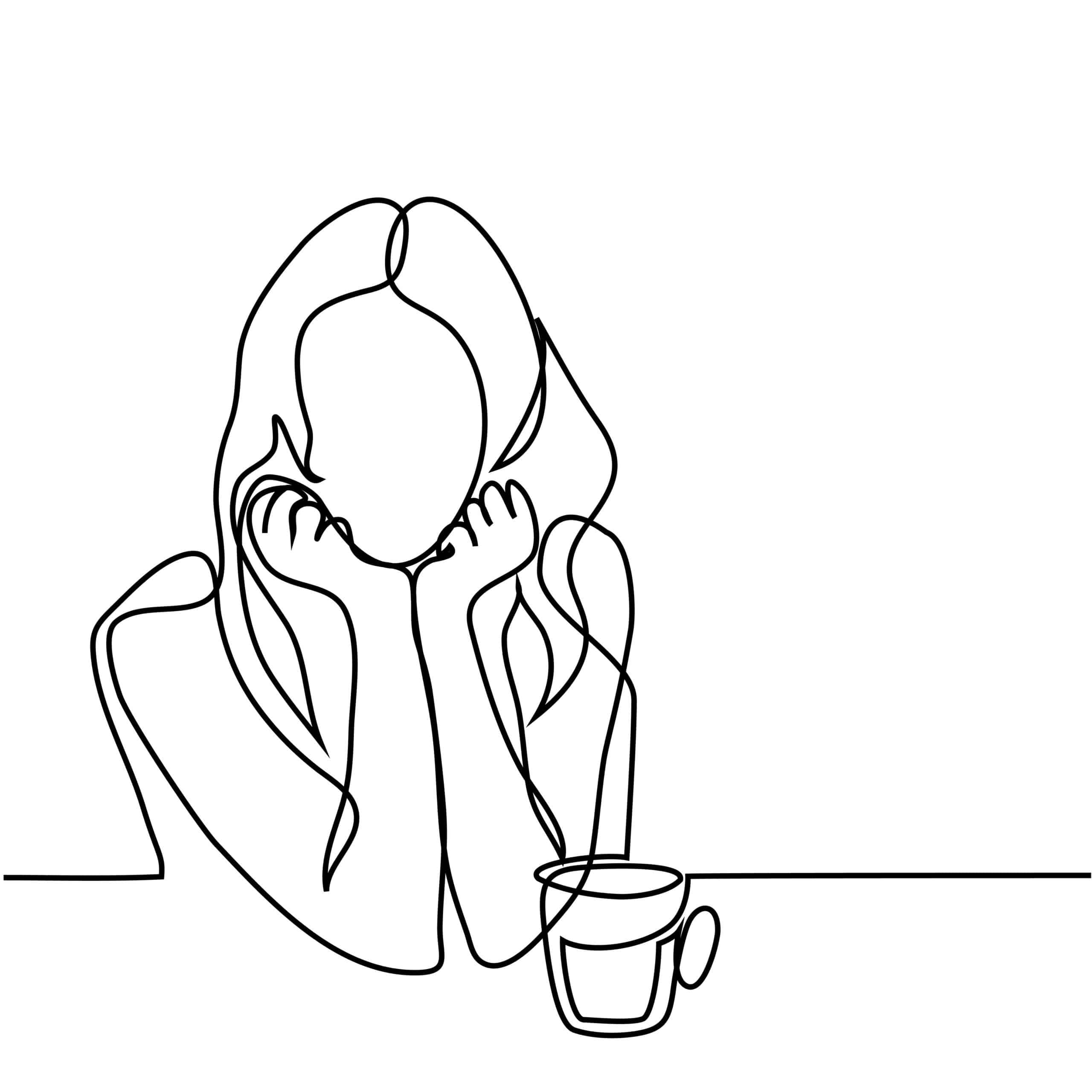If you’re the parent of a teen, you’ve likely experienced your fair share of worry. Teens are at a complicated crossroads in life, one where they’re gaining independence and exposure to the adult world but are rarely equipped with the judgment and reasoning skills to make adult decisions. What’s more, the host of social and internal pressures teens face are now magnified and often distorted on social media, making many teens feel inadequate and depressed. Unsurprisingly, adolescent mental health appears to be at a crisis point (1) in the U.S.
A big concern for today’s parents is the rise in negative body image and disordered eating among children and adolescents. A recent study from the CDC reported that among girls ages 12-17, pediatric ER visits for eating disorders increased for three consecutive years (2)–in 2020, 2021, and 2022. Another study reported that all healthcare visits for eating disorder-related issues more than doubled (3) from 2017 – 2022.
When it comes to protecting your child from the dangers of an eating disorder, early intervention is key. Getting a diagnosis and entering treatment early on in their illness helps prevent the most serious medical complications and psychological consequences of an eating disorder. It also gives your child the best chance at long-term recovery.
If you’re concerned about disordered eating in your adolescent child, education is essential. By understanding the signs, symptoms, and treatment options for teen eating disorders, you’re better equipped to get your child the help they need.
Most common eating disorders diagnosed in teens
The most common eating disorders among adolescents are anorexia nervosa, bulimia nervosa, binge eating disorder, and avoidant restrictive food intake disorder (ARFID). Other types of eating disorders are categorized as other specified feeding and eating disorders (OSFED).
- Anorexia nervosa is characterized by a body weight at least 15% below the normal range, an extreme fear of gaining weight, and a distorted body image. Teens suffering from anorexia nervosa may severely restrict their food intake, experience episodes of bingeing and purging, and engage in excessive exercise to offset their calorie intake. Studies have found that anorexia occurs in as many as 3% of adolescent girls (4).
- Bulimia nervosa is characterized by recurring episodes of binge eating followed by compensatory behaviors used to avoid weight gain, such as self-induced vomiting, laxatives or diuretics use, fasting, or excessive exercise. Sources show that about 5.4% of adolescent girls suffer from bulimia (4).
- Binge eating disorder (BED) is a compulsion to overeat in which an individual eats substantial amounts of food very quickly and feels like they cannot stop. BED is three times more common than anorexia and bulimia combined (4).
- ARFID is a type of eating disorder in which individuals avoid eating due to their inability to tolerate certain textures, tastes, and smells of food and due to fears of choking or vomiting (5).
Regardless of the type of eating disorder, unhealthy eating behaviors are cause for concern and should not be ignored.
What Causes Eating Disorders in Teens?
There is no single cause of an eating disorder, but there are several factors that can contribute to or trigger disordered eating patterns.
Some risk factors, like genetics and biology, are beyond one’s control. A family history of eating disorders or other mental health conditions can increase a person’s risk, as well as biological factors like brain structure and hormonal imbalances. Gender also plays a part, as females are twice as likely as males to develop an eating disorder (6).
There are also behavioral and social risk factors that contribute to eating disorders:
- Frequent dieting
- Obsession with body image
- Perfectionism
- Pressure and bullying at school
- Difficult family relationships
- Traumatic experiences
- Social media influences (promotion of unrealistic body types and weight stigma)
It’s important to remember that eating disorders affect people of all genders, ethnicities, sexual orientations, and body sizes. Clinging stereotypes about who is affected by eating disorders can cause parents to overlook their teen’s symptoms.
Recognizing Signs and Symptoms
Many eating disorders have overlapping symptoms, and any number of them may be present in your teen. Regardless of the specific condition, the symptoms of ED manifest in a person’s eating habits and relationship with food. Knowing and recognizing potential red flags will allow you to take action as soon as possible.
Physical Signs
- Changes in weight
- Gastrointestinal complaints (abdominal pain, constipation, acid reflux)
- Difficulty concentrating or brain fog
- Dizziness and fainting
- Dehydrated skin and nails
- Thinning hair on the head
- Fine hair on the body (lanugo)
- Tooth decay and gum damage
- Calluses on knuckles (Russel’s sign)
- Swollen salivary glands
- Organ damage or failure
Behavioral Signs
- Frequent dieting
- Body checking
- Skipping meals
- Leaving evidence of large amounts of food consumed (food wrappers/containers)
- Hoarding food
- Isolating from friends and family
- Avoiding eating in front of others
- Laxative and diuretic use
- Compulsive exercise
Psychological Signs
- Poor body image
- Low self-esteem
- Shame
- Guilt
- Hopelessness
- Anxiety and depression (7)
Case Study
One case study involving MR, a 14-year-old male, demonstrates how red flags can be present but not recognized as eating disorder-related until severe medical complications are present.
MR’s mother brought him to the hospital with severe weight loss and muscle weakness. His condition began when he was teased by his friends for being heavy, leading him to restrict his food intake and exercise constantly to lose weight rapidly. Despite his parents encouraging him to eat, MR limited his meals to only one cup of yogurt and some cucumber daily.
He became obsessed with his body shape, regularly measured his waist and thighs, and had various physical symptoms such as fatigue, headaches, joint aches, epigastric pain, and vomiting. MR’s mother described him as a perfectionist with a depressed mood and irritability. When MR finally presented to the hospital, he was severely ill with significant weight loss, dehydration, muscle wasting, dry skin, lanugo, and abnormal labs and required nasogastric refeeding. He was also in denial about his emaciated body and felt it was average size (8).
If families are educated on the symptoms of eating disorders, they’re in a good position to pick up on the warning signs and intervene before severe consequences–like those listed above–occur.
The Role of Family and Friends
Family and friends are likely to be the first people to spot the warning signs of an eating disorder in a child or teen. Don’t take your role lightly. You will be the first line of support and encouragement in helping your loved one seek treatment and start to heal.
It’s important to recognize that your teen is not thinking clearly or rationally when they’re in the throes of an active eating disorder. They may lash out at you in frustration and even blame you for their condition; their physical and emotional pain may be distressing and frustrating for you to witness. But it’s critical that you not take things personally, however emotional, angry, or fearful you may be.
Share your concerns with your teen calmly and non-judgmentally, and listen to their thoughts and perspectives. Remember that they are likely experiencing intense feelings of fear, guilt, and shame, and they desperately need you to listen and offer support.
Here are more tips for starting these difficult conversations:
- Address your concerns in a private, safe space
- Maintain a calm approach
- Avoid judging and blaming
- Encourage seeking professional help
- Be prepared for denial or a negative response
Seeking Professional Help
It’s not unusual for a parent or guardian to dismiss their teen’s eating disorder symptoms as a hormonal “funk” or a passing phase; some may even mischaracterize their child’s weight obsession as health consciousness or a lifestyle choice. These are dangerous misconceptions.
All eating disorders are serious mental health conditions that put individuals at higher risk for life-threatening medical consequences and premature death. Individuals suffering from anorexia suffer the highest mortality rate of all psychiatric illnesses (9). Most importantly, eating disorders require urgent professional treatment.
Several factors determine the type of eating disorder treatment your teen will need, including the length of their illness, the severity of their symptoms, and their medical background.
For those who are not medically stable, inpatient treatment is the initial level of care. If they are medically stable but need intense psychological care, residential treatment may be the best option. Outpatient treatment programs and individual therapy are also available to help teens address and recover from eating disorders.
In addition to formal treatment programs, many online resources, such as the National Eating Disorders Association (NEDA) and the National Association of Anorexia and Associated Disorders (ANAD), are available to help support you and your teen. These resources offer a wealth of information to help you and your teen navigate eating disorder treatment and recovery.
At Selah House, we have specially designed programs that address the unique needs of teens suffering from eating disorders. Our highly trained staff provides a variety of individualized therapies that support long-term recovery and well-being. If you want to learn more about Selah House, contact us at 866-324-8081. We are here to support you and your loved one on your journey toward healing.
References
- “Mental Health Crisis among Teens: Girls Are Especially at Risk.” AJN the American Journal of Nursing, vol. 123, no. 5, 1 May 2023, p. 12, journals.lww.com/ajnonline/Fulltext/2023/05000/Mental_Health_Crisis_Among_Teens__Girls_Are.4.aspx, https://doi.org/10.1097/01.NAJ.0000933880.48548.f9.
- Radhakrishnan, Lakshmi. “Pediatric Emergency Department Visits Associated with Mental Health Conditions Before and during the COVID-19 Pandemic — United States, January 2019–January 2022.” MMWR. Morbidity and Mortality Weekly Report, vol. 71, no. 8, 2022. https://www.cdc.gov/mmwr/volumes/71/wr/mm7108e2.htm
- Hopkins, Caroline. ““The Kids Are Not OK.” Eating Disorders among Teens More Severe than Ever, New Research Shows.” NBC News, 29 Apr. 2023, www.nbcnews.com/health/health-news/eating-disorders-anorexia-bulimia-are-severe-ever-rcna80745.
- National Eating Disorders Association. (2022). Statistics & research on eating disorders. https://www.nationaleatingdisorders.org/statistics-research-eating-disorders
- Nemours TeensHealth. (2022, March). Eating disorders. https://kidshealth.org/en/teens/eat-disorder.html
- “Report: Economic Costs of Eating Disorders.” STRIPED, 11 June 2020, www.hsph.harvard.edu/striped/report-economic-costs-of-eating-disorders/.
- Better Health. (2023, February 16). Eating disorders in children and young people. https://www.betterhealth.vic.gov.au/health/healthyliving/eating-disorders-children-and-young-people#early-warning-signs-of-eating-disorders
- Younis, M., & Ali, L. (2012). Adolescent male with anorexia nervosa: A case report from Iraq. Child and Adolescent Psychiatry and Mental Health, 6(5). https://doi.org/10.1186/1753-2000-6-5
- National Eating Disorders Collaboration. (n.d). Myths. Retrieved November 20, 2023, from https://nedc.com.au/eating-disorders/eating-disorders-explained/myth
- Mayo Clinic. (2023, March 28). Eating disorders. https://www.mayoclinic.org/diseases-conditions/eating-disorders/diagnosis-treatment/drc-20353609
Kate Delaney Chen, BSN, RN-BC is a healthcare writer and registered nurse with over 17 years of bedside experience. She specializes in Psychiatric Nursing and Nephrology and works at a nationally recognized Inpatient Eating Disorders Program.

 Call
Call

